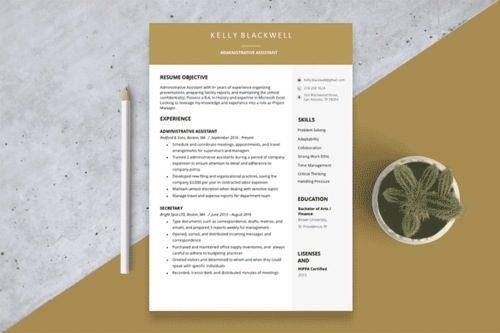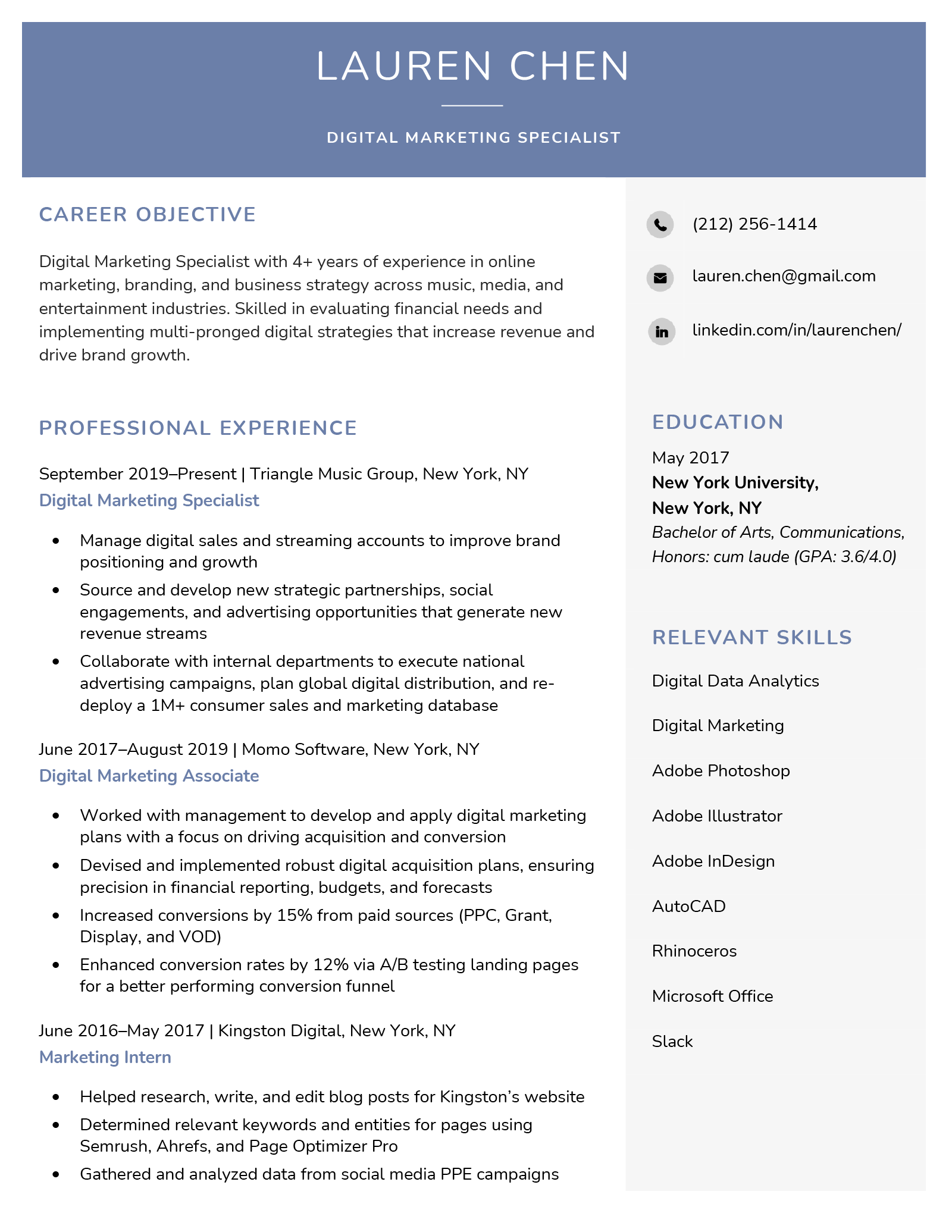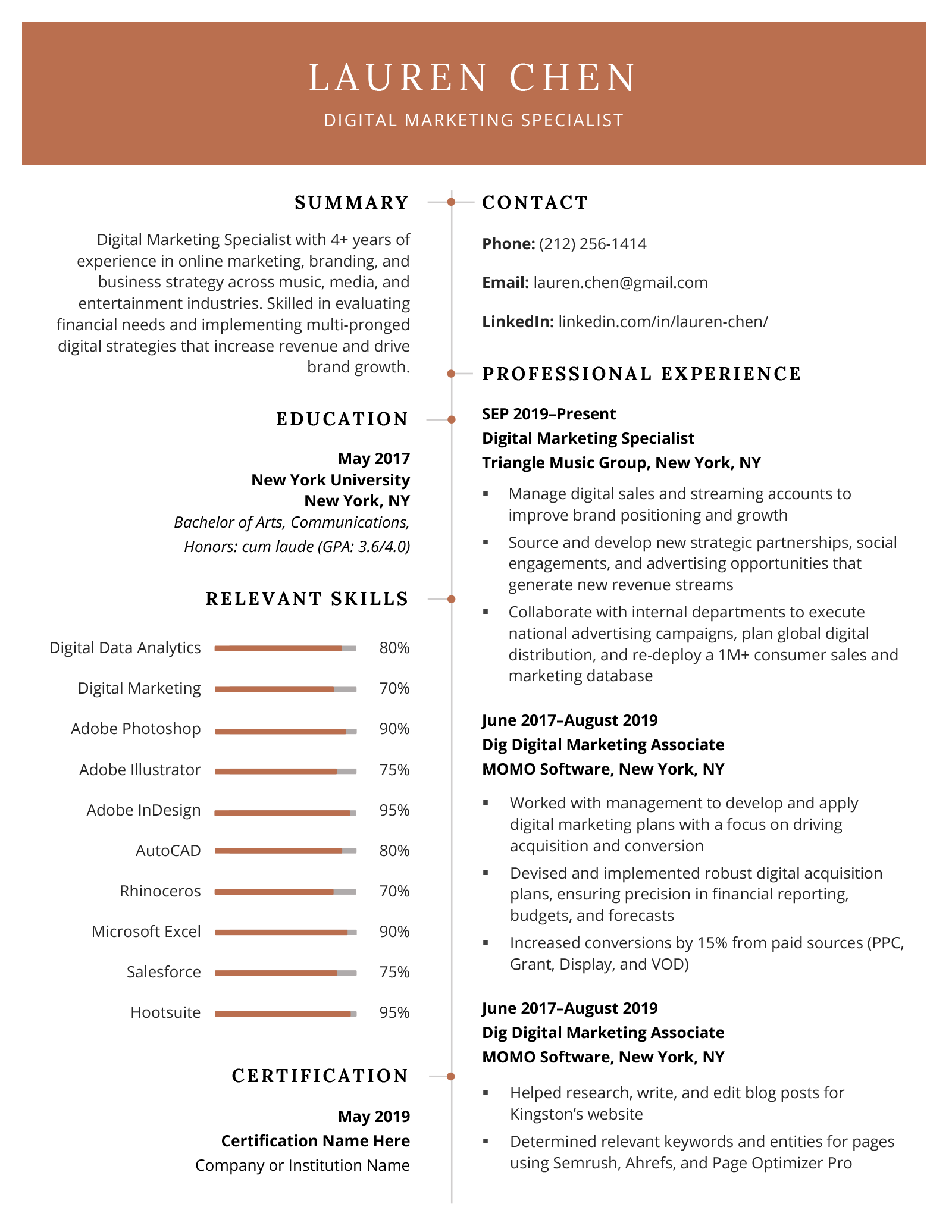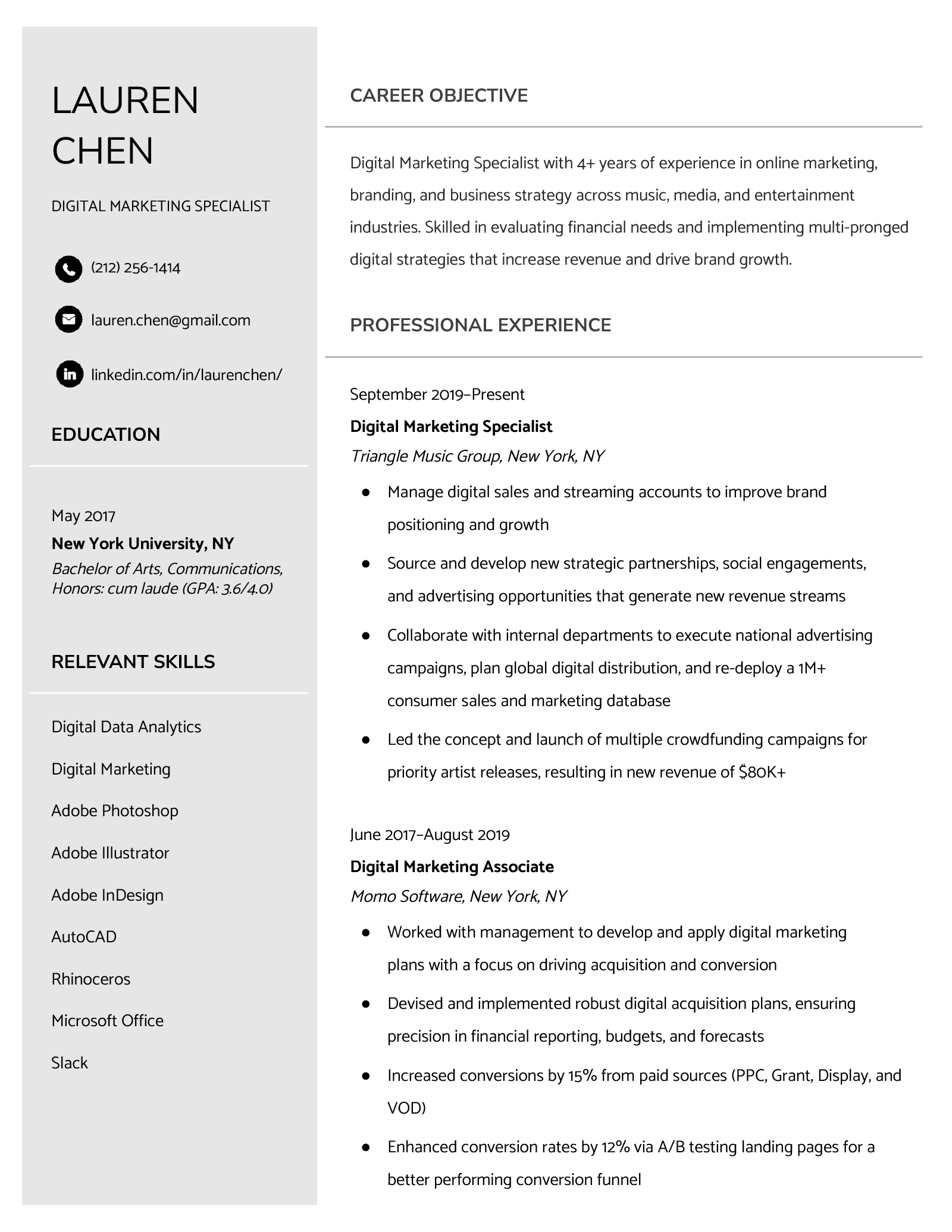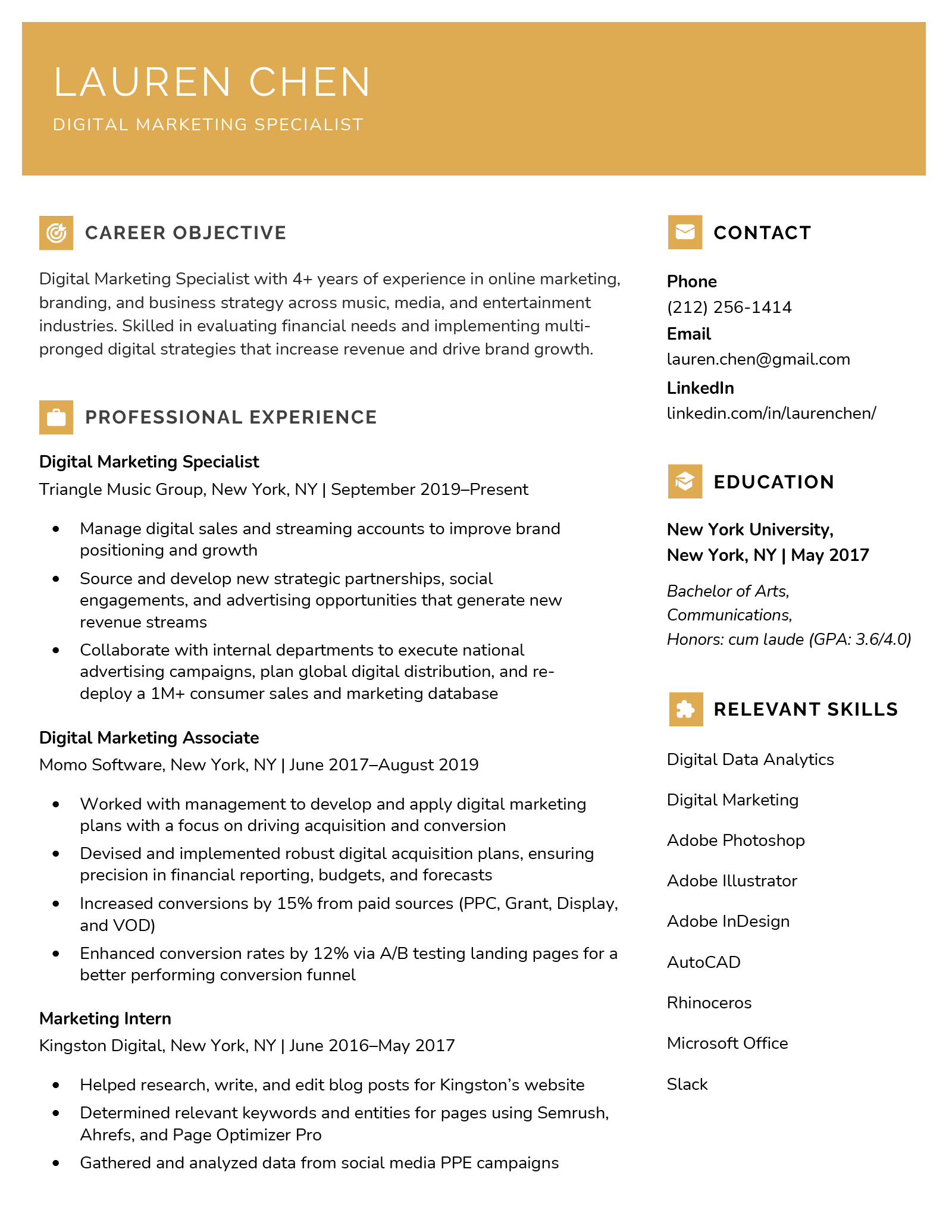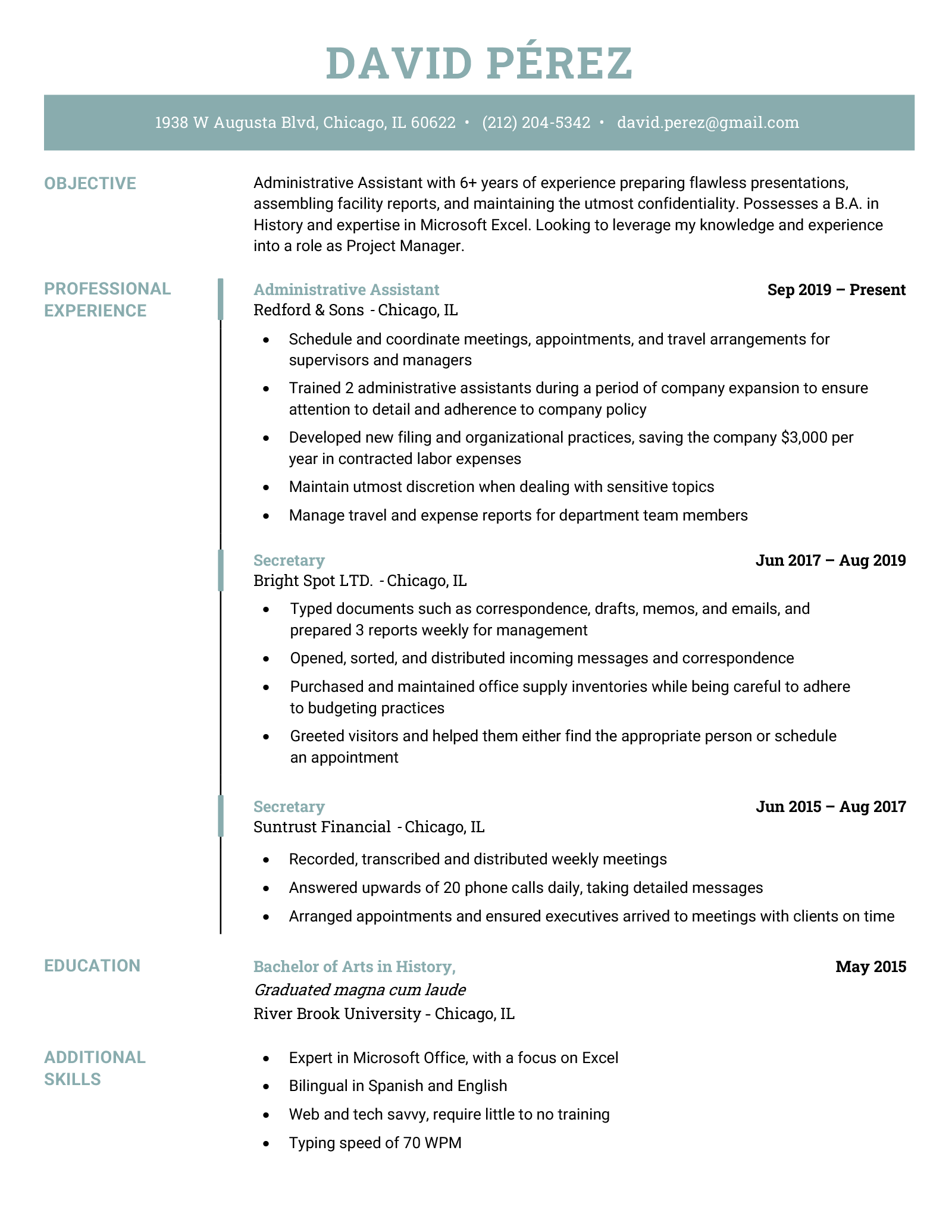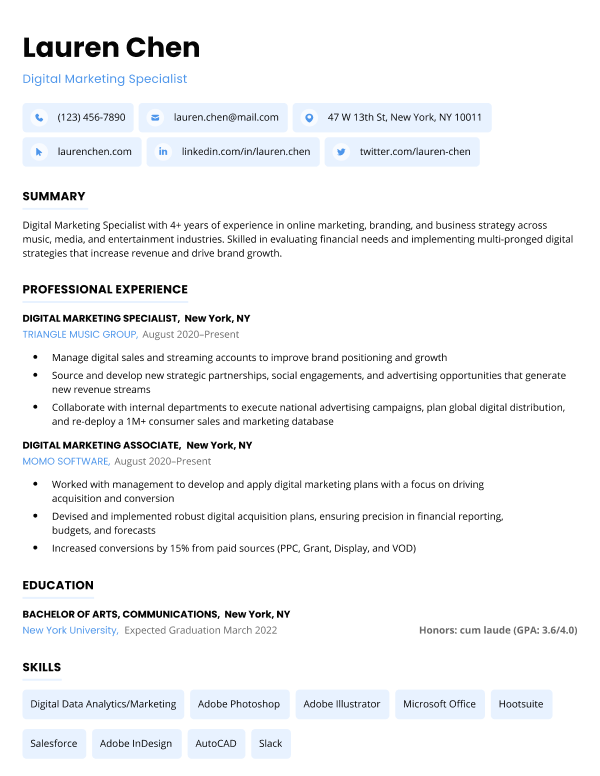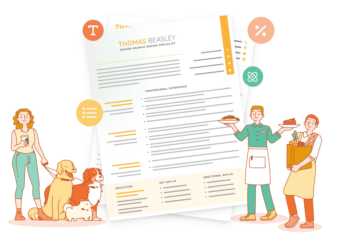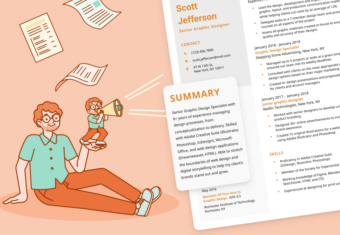In most cases, one page is the ideal resume length. Unless you have 10+ years of relevant experience and a lot of professional achievements to showcase, you should be able to summarize your most relevant skills and experience in one page.
Certified Professional Resume Writer Eva Chan explains why a one-page resume is your best option at 2:48 in this video:
If you have more than 10 years of experience and need the extra space to showcase the extent of your qualifications, you can try a two page resume.
One page resume templates
One of the easiest ways to keep your resume short (aside from using a resume builder) is to use a one page resume template to help you format your information concisely.
These six templates are free to download and designed to fit all your information on one clean page.
1. Corporate
Sleek and formal, this one page resume template features a space-saving sidebar for all your shorter sections. Additionally, a slim header gives you room for a more detailed experience section.2. 2023
This single page resume template is packed with content and still manages to look spacious. The sidebar allows you to easily organize your information, while a vertical line splits up the page and makes your resume easy to read.3. Clean
This one page resume template has a side-aligned header that frees up the entire top of the page. This additional space gives you room to elaborate on your greatest career accomplishments.4. Hybrid
Featuring a colorful skills section and information-heavy header, this professional one page resume template is ideal for candidates in graphic design or tech. By putting the contact information in the header, this template makes plenty of space for an eye-catching skills section.5. Stylish
With unique icons and a colorful header, this 1-page resume template is attention-grabbing yet functional. The sidebar format saves space for you to go into detail about the qualities that make you an ideal candidate.6. Executive
Written by a CEO with decades of work experience, this one page resume example demonstrates that no career is too long to condense into a single page.
Our free-to-use resume builder can make you a resume in as little as 5 minutes. Just pick the template you want, and our software will format everything for you.
How to fit your resume on one page
While it may seem difficult, it’s always possible to fit your information into one page without cutting out key skills and experience (even Elon Musk’s resume can be kept to a single page).
These five tips will help you learn how to condense your resume into one page without sacrificing any important details.
1. Focus on your key accomplishments
If you have an extensive amount of work experience, it can be tempting to include a variety of accomplishments on your resume.
However, to keep your resume to one page, concentrate on two to three of your most impressive and directly relevant achievements. Cut redundant information and anything that doesn’t apply to your target role.
2. Tailor your resume to the position
Listing every job you’ve ever had uses up valuable space and adds a lot of irrelevant information to your resume.
If you’ve had more than four previous jobs, include only the two or three most relevant to the job you’re applying for. This makes your resume easy to scan and quickly shows hiring managers that you’re qualified.
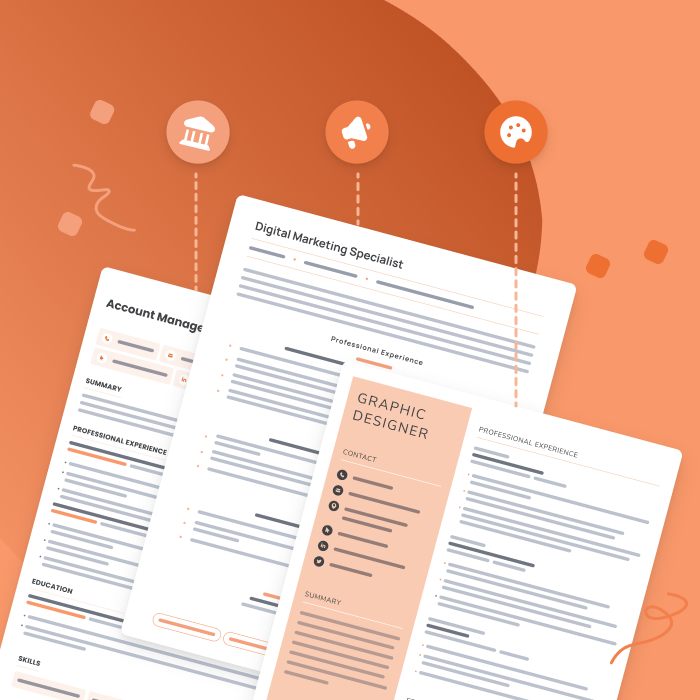
Resume examples for different industries
Not sure what your resume should look like? The best way to learn is by taking inspiration from resume examples written by other candidates in your industry.
3. Cut unnecessary sections
Job seekers often use up important space on their resume with sections that don’t provide valuable information, or even belong on their resume at all.
Including volunteer work or interests on your resume can be helpful when you have limited work experience, they should be the first thing to go if you need to free up space for your work experience.
Additionally, you shouldn’t include references on your resume. Most employers don’t require references at all, and others will ask to see your references later in the hiring process.
4. Tweak your resume’s formatting
If you find yourself running out of space, try modifying your resume’s formatting to help it fit on one page.
Try making the following adjustments to maximize space on the page:
- Use bullet points instead of paragraphs
- Reduce your resume’s margins
- Make your resume’s font smaller (although anything below 10pt might be hard to read)
- List skills on a single line or in a sidebar
- Reduce paragraph or bullet point indentation
- Make the space between sections narrower
Used together, small changes like these can help you pack in significantly more information onto a single page without looking crowded or messy.
5. Write concise bullet points
Each bullet point in your experience section should be kept to one or two lines (at most). Short, achievement-oriented bullet points backed up with hard numbers are the best way to concisely communicate your abilities to hiring managers.
Here’s an example of a bullet point that is concise, but conveys all necessary information:
Developed new business by cultivating solid relationships with clients, increasing the number of high-worth clients by 30% in less than 2 years.
Click to rate this article
4.8 Average rating


